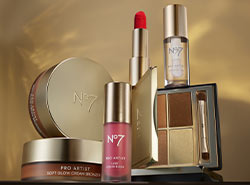Plenty changes as you age, but should your beauty regime? It’s more about small tweaks than a major overhaul, suggests beauty expert Ingeborg van Lotringen
I scoff when I hear of women cutting their hair and ditching their miniskirts after age 40 for reasons of “propriety”. As a proud 52 year old, I like to think I’m from one of the first generations that have no truck with such archaic notions. We should do what makes us feel great and not what society dictates – obviously.
But when a hairstylist gently berated me for the brittle state of my hair not long ago, I was discombobulated. My hair was never a problem and I hadn’t changed anything about my routine, so I concluded she must be wrong. Until she made me take a good look at my thinned-out lengths and explained that, like skin, hair gets progressively less strong (read: thinner, flatter, drier) with age. This is because hormonal shifts affect hair density, while hair follicles shrink*, so it needs more work and care. A smart thing to do, she said, was to cut inches off the ends, as it would take far too much effort now to keep long lengths looking healthy.
It made me realise that society’s rules may be partially based on common sense and practicality, but they have often morphed into dogmatic “musts”. The fact remains that you should ignore them at will and do what makes you feel good. But 25 years as a beauty journalist have also taught me that it’s the small tweaks to beauty habits that keep you looking and feeling like the best version of yourself, while sticking rigidly to the cosmetic comfort blankets of your youth can age you. So, here are the switches I’ve made to keep me looking my best.
Hair: chop & change
Once you’ve chosen a length where your hair no longer looks flat and tired, you need to give it some extra support and moisture, but not at the same time: rich conditioners could prevent penetration of other agents, such as a keratin treatment. Alternate between a hydrating masque and a repairing treatment, using either at least once a week. It’s a trick that is visibly reviving my hair.
Skin: protect & glow
Smugly, I thought I was doing rather well for my age until about a year ago when my face started to age startlingly fast: that’s menopause for you. While lines can appear somewhat minimised and potentially kept from deepening with efficient hydration (glycerin, ceramides), cell renewal (retinol) and daily SPF50, no skincare can “lift” loosening skin. Some new formulas can smooth and tighten it, but the effects last no more than hours. So, it's best to come to terms with a “softer” jawline and concentrate on what you can realistically improve, which is radiance.
For that, embrace chemical exfoliation but not aggressively – avoid anything that strips, burns or stings. Look for exfoliators containing PHAs (polyhydroxy acids): these are mild and double up as hydrating and skin barrier-supporting agents and pollution protectors. Used daily, they help skin look fresh and bright in weeks, softening the appearance of age spots and dehydration lines. Continuing on the theme of hydrating, brightening and protecting, your best investment is in one of the many day moisturisers that do all of that. Again, SPF is essential.
You also want to include anything that mentions your skin barrier. Ceramides, essential fatty acids, antioxidants like niacinamide and humectants like hyaluronic acid will all help skin to help itself. If you can combine it with a tinted daily SPF or a tinted moisturiser with SPF, you’re in clover. Dewy, light coverage is more flattering on mature skin than matte, heavy foundation.
Eyes: fight the puff
Ageing at turbo speed, eyes deserve extra attention. Your best investment is in a light, nourishing eye cream and a flattering gleam or tint. At night, pat the eye cream around the brow bone only (it’ll travel into lids). Too much product and you could compromise your lymph function, which is already slowing down with age. That can cause puffy upper and lower lids, which then deflate again during the day – a cycle that puts strain on the area and results in, from experience, crinkly, baggy eye skin. The best way to avoid this is with an extra pillow to keep your head elevated as you sleep and a silk pillowcase so nothing rough rubs against your eyes.
Ingeborg’s post-40 superstars
*Study published in Maturitas








